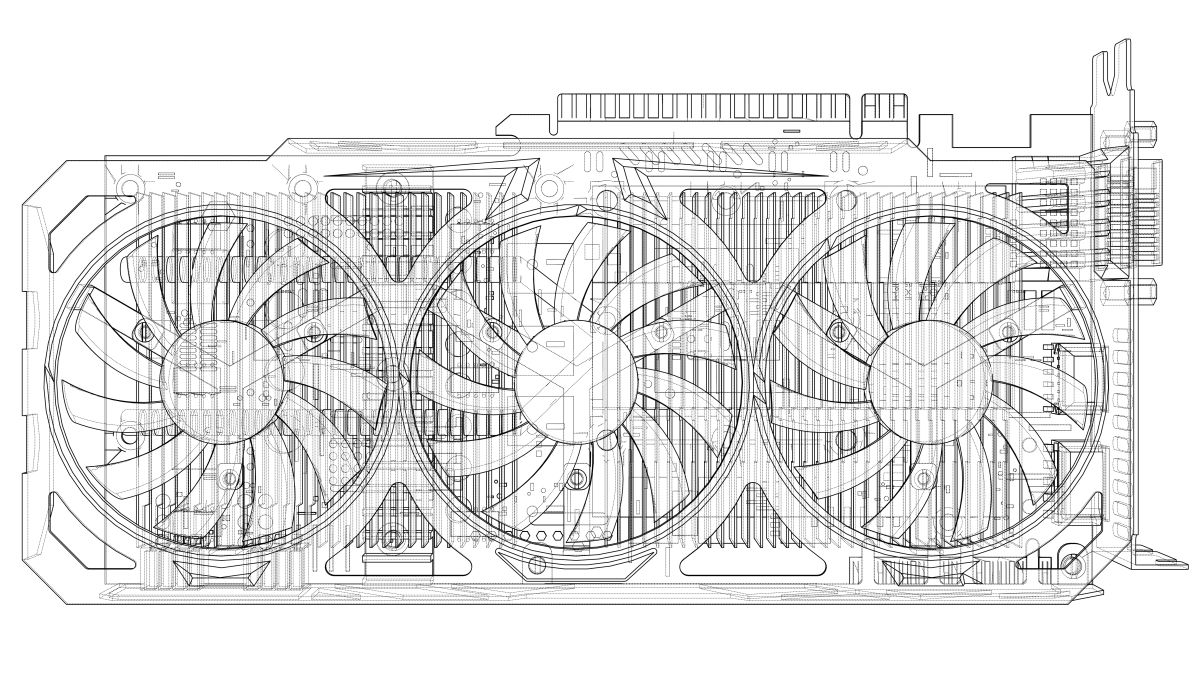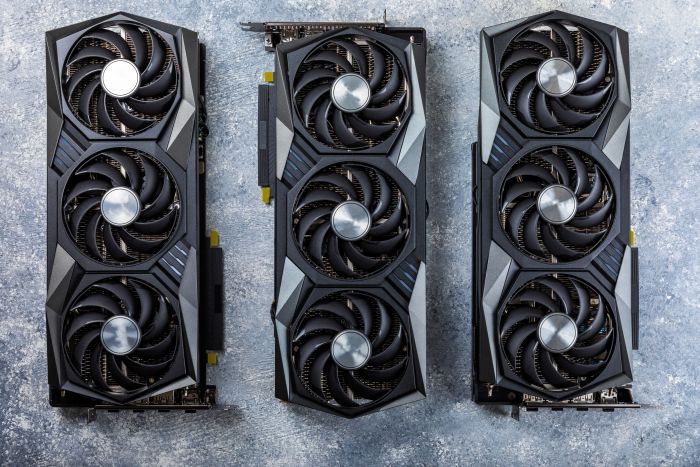
When you think of graphics processors, Nvidia and AMD probably spring to mind. But what about Intel? Until recently, most people would gloss over Intel when thinking about graphics-intensive tasks. Now, Team Blue is getting ready to release its new line of discrete Intel Arc graphics processors. Will this turn the GPU market on its head and provide a refreshing breath of fresh air for the VGA landscape? Time will tell. For now, here’s everything we know about Intel Arc graphics processors.
What Is Intel Arc?
The Arc moniker is the branding under which Intel is releasing its new line of graphics processors. The line of cards includes multiple generations of graphics cards aimed at gaming.
This isn’t Intel’s first foray into the discrete graphics processor market. But unlike the company’s Larrabee line that was shelved many years ago, it does seem to be the first lineup of discrete GPUs that will make it to market, with the first in the line being the Intel Arc Alchemist GPUs.
The Intel Arc Alchemist
When Is Intel Arc Alchemist Coming Out?
There’s been a lot of speculation around when exactly Intel plans to release the Alchemist. While Intel hasn’t given concrete dates, they have announced their plans to release the Arc series cards in stages over the first three quarters of 2022.
In Q1 2022, companies will ship laptops equipped with Arc GPUs alongside Intel’s latest 12th Gen Alder Lake H-series CPUs. Intel also says that desktop and workstation graphics cards are slated for a Q2 and Q3 release, respectively.

Are GPU excite about Intel Arc?
Shop all things Intel
How Much Will Intel Arc Alchemist Cost?
So far, Intel has been pretty secretive about pricing. With no official statements from the company on pricing, and no leaks, the price remains a mystery. However, we do know Intel is working with a number of graphics card manufacturers, such as Gigabyte, MSI, Asus, and EVGA, to produce multiple variants. This means there’s a good chance there will be a variety of price points.
Intel Arc Alchemist Features and Specs
While most of what we know about Arc and the Alchemist has been sparse and subject to speculation, Intel has released features and spec information. Here’s what we know.
Processor Technology

Gotta focus on core strength
The Arc Alchemist is based on Intel’s Xe-HPG microarchitecture. Made specifically for graphics processing, Intel states that it built the architecture with “performance, efficiency, and scalability for gamers and creators” in mind, and will power Alchemist GPUs.
Each of the Xe cores on an HPG chip will contain sets of 256-bit Vector Engines and 1024-bit Matrix Engines to accelerate workloads. It will also feature accelerated hardware for fast rasterization and ray tracing, as well as optimization for Direct X 12 Ultimate and Vulkan.
You dream it, PC Builder makes it a reality.
Super Sampling
When it comes to super sampling, Intel has their own take on Nvidia’s DLSS and AMD’s FidelityFX Super Resolution. Aptly named XeSS, it’s an AI-enhanced upscaling technology that allows the Alchemist to upscale anything, from 1080p to 4K, with a negligible impact on performance and frame rates.
Much like DLSS, XeSS achieves this with the use of a neural network and machine learning to upscale content.

Skynet is online
But unlike DLSS, Intel has plans to not only integrate XeSS on the new Xe-HPG architecture, but it’s also planning on a version of XeSS that uses the 4-element vector dot product (DP4a) instruction, which has far wider support among legacy hardware.
Intel claims that XeSS will offer up to a 2x performance boost, and allows weaker hardware to run games at 4K. It’s expected to release with the Arc Alchemist, and may ultimately prove the middle ground between Nvidia and AMD’s own super sampling technologies.
Deep Link Technology
One of Intel’s biggest potential assets coming into the Alchemist launch is its Deep Link Technology. Offering a promise of greater workloads on lesser hardware, Deep Link is an AI-powered software framework that harmonizes integrated and discrete GPUs to allow for more effective load-scaling on some applications.
It also utilizes Dynamic Power Sharing, a feature that dynamically balances power between the CPU and GPU, allotting more power and thermal resources to the CPU when the GPU is running idle. Intel claims CPUs can see up to a 20% performance increase with Dynamic Power Sharing, and it’ll be interesting to see how Intel can further optimize this between its own processors and graphics cards.
Get in the game with a new Gaming Monitor
Game Support

We’ll have to wait until Intel releases more info for the full list
Despite the fact that the card has yet to drop, we do know the Intel Alchemist will support a variety of triple-A titles with its new XeSS. Here’s a complete list of games so far:
- Death Stranding: Director’s Cut
- Grid Legends
- PUBG
- Hitman III
- The Rift Breaker
- Arcadegeddon
- Dolmen
- Instinction
- Grit
- Super People
Intel also says that it’s collaborating with many studios, meaning there are more games that take advantage of XeSS on the horizon.
Project Endgame
Another enticing trick that Intel has up its sleeve is Project Endgame. While details on this are limited, Intel has indicated that it will be some sort of cloud streaming service, in which users can access Arc GPUs through the cloud for intensive tasks such as gaming.
This could be Intel’s answer to Nvidia’s GeForce Now and Microsoft’s Xbox Cloud, further entrenching Intel as a serious contender in the graphics processing and gaming market.

It is inevitable
Game and be heard, with a new Gaming Headset
Intel’s Future Plans
Going forward, Intel has plans for future generations of graphics processors. In fact, according to Intel’s roadmap, at least one such architecture – code named Celestial – is reportedly going to be for ultra-enthusiast consumers. Development for Celestial is reportedly already underway, and is slated for release after project Battlemage, potentially in 2024.
The other two projects – Battlemage and Druid – have little concrete information available. Some Intel insiders have stated that Battlemage will be Intel’s true high-end market competitor, going up against Ada Lovelace (Nvidia) and RDNA 3 (AMD) in 2023. Druid, on the other hand, is set to be Intel’s 4th generation Arc card, and is expected to launch in 2025.
How Will Intel Arc Stack Up Against AMD and Nvidia?
Overall, it’s hard to say with any certainty how Intel’s Arc will stack up against AMD and Nvidia. Both AMD and Nvidia have run the gamut over the industry for the last 20 years, carrying forward decades of momentum.
But this isn’t Intel’s first rodeo. Over the last 10 years, the company has made some serious improvements to its handling of graphics processing, and according to inside sources, the company seems fairly confident that it can keep up with AMD and Nvidia.
Intel also plans on shipping over 4 million units of the Arc in 2022, hopefully helping to alleviate the supply issues that have resulted from the chip shortage over the last couple of years. And depending on what Intel has to offer, it could seriously shake up the gaming market going forward.
Get everything a gamer needs and more at Newegg


